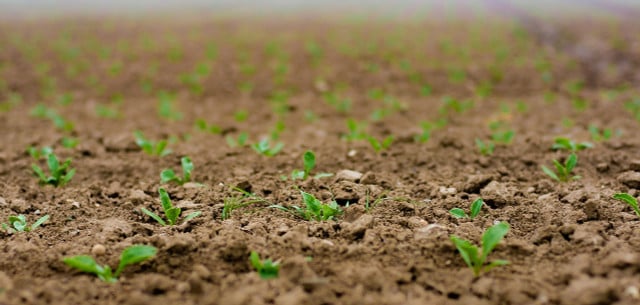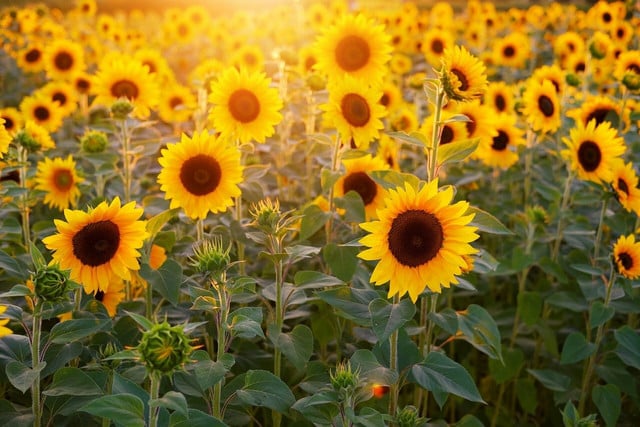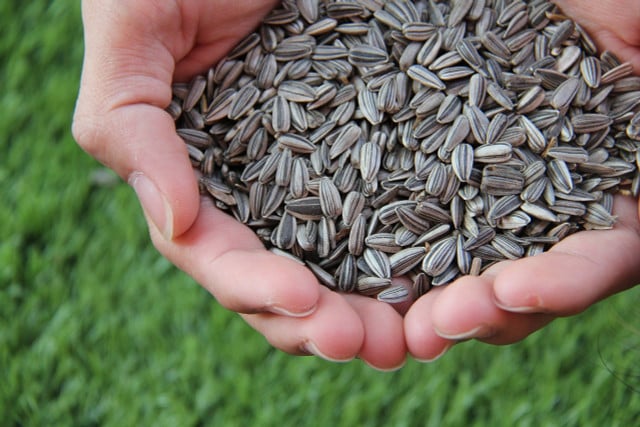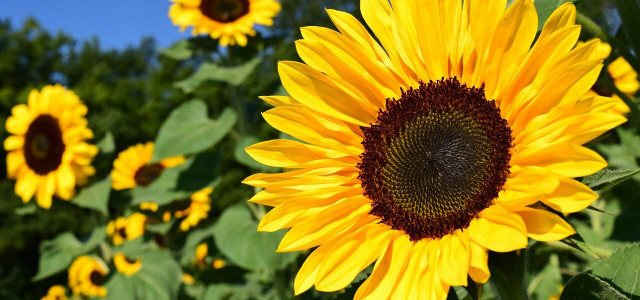Growing sunflowers takes a bit of patience, but you can reap many benefits by adding these to your garden. Let's take a look at how to grow them!
2021 was designated as the year of the sunflower by the National Garden Bureau, and it’s not hard to see why. They’re cheery and bright, great at attracting pollinators like birds and bees to your garden, and some varieties even have the benefit of edible seeds!
Growing sunflowers is a great way to brighten up your yard, but it does require a bit of patience and knowledge to choose which type is best for you. There are large and dwarf varieties and most begin to bloom after about 80 to 95 days. Let’s take a closer look at what you need to know to start growing sunflowers in your backyard.
Growing Sunflowers: Where & When to Plant

(Foto: CC0 / Pixabay / Uschi_Du)
Knowing where and went to plant your sunflower seeds is half the battle of growing them successfully.
When to Plant
- The best time to plant sunflower seeds is between April and early July, however, if you live in the south, you may be able to plant as early as March/mid-April, depending on the temperature.
- The exact time ranges from state to state, so be sure to look up when the last frost date in your local area is. Once you’re no longer at risk of frost, sow your seeds directly into the ground or your container.
- If you can avoid it, don’t transplant a sunflower. Let it grow wherever you sowed the seeds – these flowers have a delicate root system and don’t like to be disturbed.
Where to Plant
- It goes without saying that you need to choose a bright and sunny location – they are called sunflowers for a reason!
- Sunflowers don’t like to be waterlogged, so you’ll want to choose a location with well-draining soil. If you can find a spot with nutrient-rich soil your sunflowers will be even happier.
- When growing sunflowers, you’ll want to plant them up against a wall or fence for protection from the wind. Some varieties are quite top-heavy, and the wind can do serious damage.
Preparing the Location & Sowing the Seeds



(Foto: CC0 / Pixabay / Darkmoon_Art)
Once you’ve found the ideal location for growing sunflowers, you’ll need to do a bit of prep work to get the bed ready.
- Dig a 2 ft x 3 ft bed, and make sure to till the soil so it’s nice and loose. Sunflowers develop very long root systems and need room to grow.
- Consider mixing in some organic matter or compost to ensure the sunflowers have enough nutrients to feed on.
Sowing the Seeds
- Plant your seeds approximately 1 to 1-½ inches deep and about 6 inches apart.
- Because these plants need plenty of space to grow, plant your seeds about 20- 30 inches apart.
- Don’t plant all your seeds at once. Consider staggering your planting days by a week or so in order to enjoy blooms all summer long.
Growing Sunflowers: Tips for Care



(Foto: CC0 / Pixabay / Bru-nO)
Caring for sunflowers is generally quite simple, but there are a few things to keep in mind.
- Sunflowers are very thirsty, so you’ll need to keep them well-watered. If larger varieties dry out, they’ll have a hard time recovering. Consider adding a layer of mulch to help maintain moisture levels.
- Taller varieties might need the assistance of a stake or trellis.
- Choose the right seeds. If you want large, dinner-plate-sized blooms, it pays to do your research.
- Pinch side shoots to keep the plant’s energy concentrated in the flowers.
Companion Plants
Sunflowers make a great companion plant for many flowers, vegetables and herbs. There’s actually very little it won’t work well with. The one thing to steer clear of is potatoes – these two will not do well together.
Herbs
Vegetables
Flowers
- marigolds
- nasturtiums
- daisies
- cornflowers
- sweet pea
- geraniums
- lobelia
Harvesting & Using Sunflower Seeds



(Foto: CC0 / Pixabay / nonnatthapat)
The easiest way to harvest sunflower seeds is by letting nature do it for you. Simply cover the head with a paper bag to keep birds and squirrels from stealing your seeds and wait. Once they begin to loosen, they’re ready to harvest – you just need to pluck them by hand.
When you’re ready to eat them, you can snack on them as-is or roast them. Other ways to use sunflower seeds include:
- adding them on top of salads
- in homemade granola bars
- spelt or gluten free bread
- on top of overnight oats
- or in oatmeal cookies
The possibilities are endless. Reap the rewards of your harvest!
Read more:
- Edible Flowers: Which Are Safe to Eat and How to Put Them to Use
- How to Dry and Preserve Flowers: 3 Easy Methods
- How to Dry Lavender: Preserving the Scent of Summer
- Growing and Harvesting Spinach: A Complete Guide
Do you like this post?






